Хаас за Испания
Ромен Грожан:
You said you wanted to wait four races until you determined where Haas F1 Team was in relation to its midfield counterparts. With four races in the books, where does Haas F1 Team stand?
Generally, if you look at the first three races, we’ve been really consistent, really good. Sochi was a peculiar one. We struggled a little bit with the car. I struggled with my driving. We can analyze a lot from it. I don’t think it’s down to inconsistency, as it was last year, so I would say that I’m pretty pleased with the way we’ve started the year. I’m pleased with where the car is. We’re usually on the border line for getting into Q3. Now the big question is what the updates are going to do? How much of an upgrade are we going to get compared to others? I believe we’re on a good path, but you never know what the others are doing. It’s going to be good to go to Barcelona and see the work we’ve done.
Much was made about the new cars for this season as they are demonstrably faster with more downforce and much wider tires. Despite the amount of change introduced this year, how normal does the new car feel after four races?
As we saw in winter testing, and then in Melbourne to begin the season, we got a big surprise with the speed we can carry through the corners with the car. After a few races, though, you forget that and move on to what we have now. There are a few circuits such as the non-permanent ones where it’ll be fast, but most of the other ones, the grip and speed feels normal.
Last year, finding the proper working range of the tires proved difficult. After racing at four very different venues in four very different environments, how is it to find the proper working range of this year’s tires?
I think this year’s tires are a bit easier to work. Clearly, the tires are a big key – Russia was a good example, where a driver could do more than 30-something laps on ultrasofts. That’s something we need to analyze and understand a bit better. Generally though, this year’s tires have been better than what they’ve been in the past. They’re easier to work.
You racked up a lot of laps at Barcelona earlier this year during winter testing. Do you have a higher level of comfortability with the car at Barcelona because you know what to expect?
Everyone knows Barcelona very well. It’s good to judge which changes we’ve made and how much we’ve developed from winter testing to the race. I think Barcelona is going to be key in the season because it’s the first big update for a lot of drivers and teams. That’s where we need to see what we’ve done, and if it’s good enough or if we want more.
The data Haas F1 Team had from last year is largely out of date because this year’s car is so different. But Barcelona allows you to have current data thanks to all the time you invested in testing. Granted, all of the other teams have 2017 data from testing too, but how valuable is it to arrive at a grand prix with pertinent data secured only two months ago compared to a year ago?
It’s going to be better and there are a few things we can compare with winter testing. Again, I think with the updates the cars are going to be so much faster than we were in testing. It’s going to be hard to compare. I’m not watching last year’s data. We’re too far ahead now and it’s too different. It makes it more fun.
It’s been two months since you tested at Barcelona. How do you expect the track to change between then and now?
It’s normally much warmer, so the tires work much better. The track itself doesn’t move a lot. We’ve been so many times to Barcelona – we’ve seen it from minus 10 to plus 30 degrees.
Barcelona marks the first European race on the Formula One schedule. Typically, many teams bring updates to their cars for the Spanish Grand Prix. Does Haas F1 Team have any updates for its cars and what are your expectations with these updates?
We’ve got some pretty big updates coming. It’s going to be the first big test for us in 2017. The year is going to be mainly driven by updates and the performance it brings to the car. I think the car that was on pole in Melbourne, if you bring it to Abu Dhabi at the end of the year, I’m not even sure you’d make it to Q2. I’m pretty sure you cannot. Updates this year are going to be big, so I’m looking forward to that.
Between the updates all the teams are expected to bring and the collective knowledge learned about the current car, how different is the Spanish Grand Prix weekend from when teams were in Barcelona two months ago for testing?
Every grand prix is the same thing. You start the weekend trying to get the basics right. You’re working on setup and, of course, if you’ve got an update, on the first day you’re looking to see if it’s working and doing what it’s meant to do. If that’s the case then great, if not, you have to try and understand why and fine tune it in a certain way.
Do you have any milestones or moments from your junior career that you enjoyed at Barcelona?
I’ve had my only fastest race lap in Formula One at Barcelona. Apart from that, in 2009 in GP2, I won the first race, and in 2011, I had some good overtaking there. It hasn’t always been a brilliant track for me.
What is your favorite part of the Barcelona circuit and why?
I like turns one, two and three because they’re mid-to-high speed corners. It shows how the car is behaving and you really get the feel of the grip.
With Barcelona’s mix of corners and abrasive surface, how physically demanding is the track in terms of what you have to do behind the wheel?
It’s a very demanding track because you’ve got some high-speed corners, like the first sector, then you’ve got some very low-speed sections and corners, like the last sector of the track. It’s normally a good judge for the car, showing that you’re capable of having some good downforce at high speed and good mechanical grip in the low-speed turns.
Describe a lap around Barcelona.
Barcelona is probably the track you know best in the world. You can name every part of the layout. There’s a long straight, then the first two corners right and left. You carry quite a good speed into them, and then there’s the famous turn three, which you now take flat out. Turn four, there’s usually some front-locking. The hairpin into turn five, going down you don’t see the apex until late, so it’s a tricky corner. Turns seven and eight going up the hill lead to the very high-speed turn nine, which has a new curb on exit. Then you get to the hairpin at turn 10, which is very tricky under braking. Turns 11-15 are almost one corner – as a complex, it’s difficult to get a good flow around those corners. You need to get a good balance there. Turn 16 is the last corner and you want to try to stay as flat-out to prepare for the straight and get a good lap time.
Кевин Магнусен: With four races in the books, where does Haas F1 Team stand in relation to its midfield counterparts?
We’re in the mix of that midfield group, which is extremely tight. It will vary a little bit from race to race in terms of who’s in front of that group, but we’re certainly in the mix.
You seem to have assimilated to the team quickly. How has the transition been to Haas F1 Team?
It’s been very easy and enjoyable. It’s a really cool bunch of people and it’s been very easy to settle in.
Much was made about the new cars for this season as they are demonstrably faster with more downforce and much wider tires. Despite the amount of change introduced this year, how normal does the new car feel after four races?
We all get used to the cars very quickly. After testing they all felt very familiar and normal. You still notice how fast they are. You still feel extremely good when you push the car. It’s a lot more fun than before.
Last year, finding the proper working range of the tires proved difficult. After racing at four very different venues in four very different environments, how is it to find the proper working range of this year’s tires?
It’s easier than last year, but it’s still not straightforward. It’s something that we still need to focus on, but it’s not as difficult as last year.
You racked up a lot of laps at Barcelona earlier this year during winter testing. Do you have a higher level of comfortability with the car at Barcelona because you know what to expect?
I would say we’ll be a little bit more dialed in to the speeds that we can carry and the driving style we use in Barcelona. After a few days of testing, you’re always a little bit more comfortable. I’m looking forward to going back there.
The data Haas F1 Team had from last year is largely out of date because this year’s car is so different. But Barcelona allows you to have current data thanks to all the time you invested in testing. Granted, all of the other teams have 2017 data from testing too, but how valuable is it to arrive at a grand prix with pertinent data secured only two months ago compared to a year ago?
It’s an advantage, but it’s an advantage that everyone has. It’s not going to help us be more competitive, because everyone else has it as well.
It’s been two months since you tested at Barcelona. How do you expect the track to change between then and now?
Not at all, it’s the same.
Barcelona marks the first European race on the Formula One schedule. Typically, many teams bring updates to their cars for the Spanish Grand Prix. Does Haas F1 Team have any updates for its cars and what are your expectations with these updates?
Yes, we have some upgrades coming for Barcelona. It’s always interesting to see what they can bring. Hopefully, it will be positive.
Between the updates all the teams are expected to bring and the collective knowledge learned about the current car, how different is the Spanish Grand Prix weekend from when teams were in Barcelona two months ago for testing?
It depends on how big the effect of these upgrades are. Obviously, if it changes the behavior of the car, then we need to dial the balance back in and do a bit of work on the setup. Hopefully, it will be pretty transparent and straightforward, but we’ll have to wait and see.
Do you have any milestones or moments from your junior career that you enjoyed at Barcelona?
Yes, I won the World Series by Renault championship there. That’s always a good memory.
What is your favorite part of the Barcelona circuit and why?
The podium!
With Barcelona’s mix of corners and abrasive surface, how physically demanding is the track in terms of what you have to do behind the wheel?
It’s a pretty tough track. There are some fast corners there that pull on the neck, some good braking zones. It’s always a pretty physical track but I look forward to it.
Гюнтер Щайнер: With four races in the books, where does Haas F1 Team stand in relation to its midfield counterparts?
It’s difficult to say. One weekend you’re on top of it, then another weekend – like in Sochi – you’re at the bottom of it. It’s so tight the midfield. Hopefully, it stays tight all year and we can go back to being on top of the midfield.
Your frustration after the Russian Grand Prix was evident. Is that due in large part to the potential your cars have this year, and when that potential isn’t realized, it’s an opportunity lost?
Absolutely. Every chance not realized is a lost opportunity. You always have chances. We had one in Australia, we lost it. In Sochi, our qualifying was not fantastic, but again, Kevin made a good start, but then we got the penalty because he drove the wrong way back onto the track and we ended up 13th. At Sochi, there is very little overtaking taking place. It’s difficult to move forward.
Much was made about the new cars for this season as they are demonstrably faster with more downforce and much wider
tires. Despite the amount of change introduced this year, is there a feeling of normalcy with these cars after four races?
It’s like we don’t even remember the old car. It’s a strange thing, but time moves so fast in F1. We’re four races in and we’ve forgotten about what we did last year. Technology moves so fast. It’s quite amazing.
Brakes remain a topic for Haas F1 Team. Explain the swap back-and-forth between Brembo and Carbon Industri (CI) at Russia and what the plan is for Barcelona.
We started off with CI brakes in Sochi. We weren’t getting enough cooling for them, and if you don’t cool them enough, you overheat the brake itself and the pedal gets long. Also, the wear is very high. We looked into it to see if we could survive a race, but we realized we could not. Therefore, the decision was taken to go back onto the Brembo. As it stands now, we will race Brembo in Barcelona.
To figure out how we can fix the problem will take a bit, but we will get there. It isn’t an easy problem to solve. We will take our time. We know what we’ve got after our Bahrain test with CI brakes, and after Sochi in FP1 and FP2. We know what we need to do and what needs to get done, but it will take a little bit of time.
When it comes to the different brake packages from Brembo and Carbon Industri, what are the drivers saying about the feel of each package?
Romain was pretty happy with the latest iteration of Brembo. He said he’s ok with it. Kevin liked the CI better because the bite is better. He just has a better feeling with the CI brakes. Now we need to get the CI working and see where we stand before coming to the absolute conclusion. I’ll be happy when we can check this off of our list.
Everybody needs to understand that this is a very sophisticated brake system. It is not easy to fix. The obvious question, and rightly people ask, is that it cannot be this difficult to fix a brake. It actually is. It isn’t easy. This is because they’re highly complicated technologies, they’re highly advanced. When you change from one to the other, you encounter issues you’re not aware of until you try it properly. Without testing during the season, you need to do it in FP1 and FP2. You always have to wait two weeks to do something. So you can never go and do a proper test and do modifications. You always have to fit it in somehow. It compromises your testing, and that’s why it takes so long. It’s not that we’re not working hard. Our people are very competent and can do this, it just takes time.
Last year, finding the proper working range of the tires proved difficult. After racing at four very different venues in four very different environments, how is it to find the proper working range of this year’s tires?
It’s the same. It’s just a wider tire, but you still need to get it to work. I think our biggest problem, as we experienced in Sochi along with a few other teams, we just couldn’t get grip. Sochi’s surface is very slippery, very smooth, so we were a little out. Kevin could deal with it, but Romain struggled with it and we couldn’t find a window for him where the tire worked. We weren’t on our own, other people had the same issue. But outside of Sochi, I think we’ve made a good step since last year to get in the window.
You racked up a lot of laps at Barcelona earlier this year during winter testing. Do you have a higher level of comfortability with the car at Barcelona because you know what to expect?
It’s the same and everyone’s done the same level of testing, and a lot of people have done the same mileage. I think we know what we can do, but we don’t know what the other teams will bring to Barcelona. As we said before, the midfield is very tight and you could be anywhere. You could be from eighth to 16 th , anywhere in there.
The data Haas F1 Team had from last year is largely out of date because this year’s car is so different. But Barcelona allows you to have current data thanks to all the time you invested in testing. Granted, all of the other teams have 2017 data from testing too, but how valuable is it to arrive at a grand prix with pertinent data secured only two months ago compared to a year ago?
The car will be updated since the Barcelona test. So you have a different car, different temperatures and the tires will work in a different window. We have more information on Barcelona than the other tracks, but that doesn’t make you comfortable.
Barcelona marks the first European race on the Formula One schedule. Typically, many teams bring updates to their cars for the Spanish Grand Prix. Does Haas F1 Team have any updates for its cars and what are your expectations with these updates?
We’re bringing our first extensive update kit to Barcelona, as all the other modifications we’ve done have been very small. We hope it works like everything else that has come out of the wind tunnel and is very reliable in terms of the correlation from wind tunnel to track. We hope to make a step forward. There are always unknowns with a new update kit, therefore we don’t want to disclose too much and be too hopeful. Some people might notice – it will be visible – but not straight away. It’s nothing big on the outside.
Between the updates all the teams are expected to bring and the collective knowledge learned about the current car, how different is the Spanish Grand Prix weekend from when teams were in Barcelona two months ago for testing?
Barcelona is the first European race of the season, so a lot of people are in attendance. We have got a lot of things to do. In the two 90-minute sessions on Friday, your test program needs to be in there. If you miss the time, you miss the testing. It always puts additional stress on people and on the drivers to not do anything wrong. If you do the smallest thing wrong, you don’t utilize the time that’s available. That’s no different than any other place, but compared to when we were at Barcelona for winter testing, there’s just a little bit more pressure.


















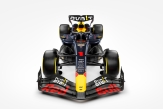
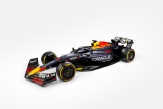

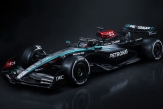
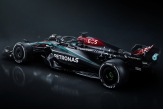


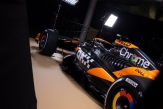

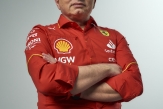
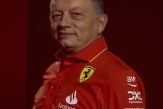
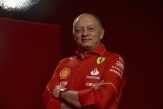

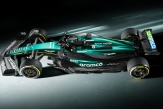

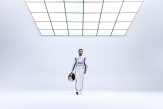



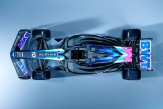




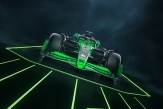
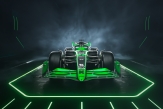
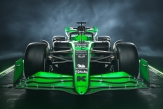

15/04/2024 от Огнян Тенчев (drJeckyll), няма коментари